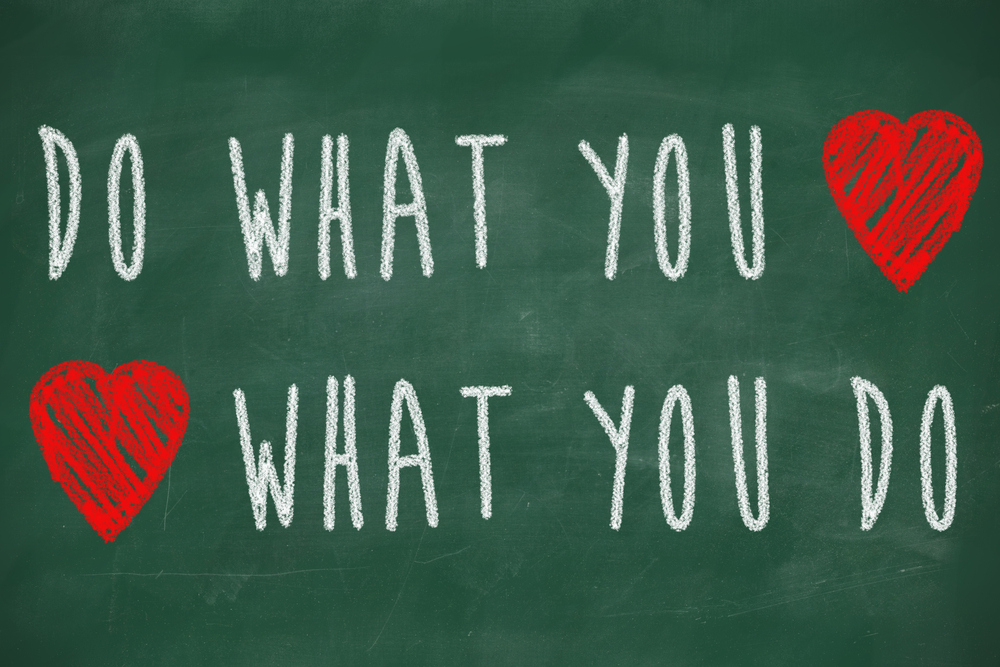Mimetic desire: How to avoid chasing things you don’t truly want

- Luke Burgis is a veteran entrepreneur and author of Wanting: The Power of Mimetic Desire in Everyday Life.
- Using insights from philosophy and neuroscience, Burgis explores the ways in which we often look to other people for models of behavior.
- The main problem with following mimetic desires is that there is always a new model to follow, and most models are liable to lead us away from what we might truly need or want.
One of the most fundamental human beliefs is the idea that we are autonomous — that our unique desires come from deep within. But what if the truth is more complicated?
According to Luke Burgis, veteran entrepreneur and author of Wanting: The Power of Mimetic Desire in Everyday Life, which draws from the work of French polymath René Girard, our desires are strongly shaped by models around us, whether they are celebrities, influencers, or our own peers.
Still, many of us think we are above influence. This resistance “comes from pride, a false sense of our autonomy and independence and unwillingness to see ourselves as part of an economy or ecology of desire,” Burgis told Big Think. The effects can be seen on a small scale, influencing our feelings of self-worth, for instance. On a larger scale, they can act as a catalyst for cultural and political polarization.
I spoke to Burgis, currently the Entrepreneur-in-Residence and Director of Programs at the Ciocca Center for Principled Entrepreneurship, about how others shape our desires, how we can begin to recognize our models of desire, and why those who most strongly believe that they are immune from influence may actually be the most susceptible to mimetic models. Here is our conversation, edited and condensed for clarity.
Why is desire so important? How does it affect our health and wellbeing?
Desire is fundamental. Desire moves us or attracts us toward certain people and certain things. It’s almost a life principle. The principle of vitality — when desire dies we die, in a sense. So desire is a beautiful, powerful thing. Somebody who doesn’t want anything is either depressed or dead. Now, obviously we can falsely perceive things that are good for us, but we wouldn’t want anything if at some level we didn’t believe that it was good. And this idea comes straight from Thomas Aquinas.
Eastern philosophy and Western philosophy and spiritual traditions come at this from slightly different angles. Eastern philosophies and religions traditionally looked at desire as a source of suffering, something to seriously contend with and to get under control. In Western philosophies, there’s a way of thinking of desires as needing to be well-ordered — that some desires, if pursued, bring us closer to fulfillment, and others, if pursued, will cause us pain. The key is discerning the difference between the two.
The basis of mimetic desire is that desire is shaped through models of desire. Humans rely on other people to model certain desires for us. The danger of finding new models of desires is that there’s always another one. And if we don’t have any kind of fixed reference points or end in mind, then we can be pulled in seven billion different directions, right? So that’s the danger.
How do models of desire (or mimesis) shape what we want?
People like to assume that they’re making decisions based on purely rational factors. In a technological society where we’re relying more and more on technology, it’s almost shaped our brains, in a sense. We think of ourselves as being hyperrational, just like the technology that we’ve invented or created. But we’re not entirely rational. We’re incredibly social creatures, and we don’t have a proper appreciation for the extent of the information that we’re taking in about how our fellow humans’ desires are shaping our own desires.
Mimetic desire is usually operating on a layer under the surface of the information that we’re aware of, that we’re using on a conscious level to make decisions.
What is the scientific or neurological basis for mimesis?
A type of mirror neuron exists in the brain. It was first discovered in Parma, Italy, when researchers were studying monkeys. They saw that when monkeys see a human taking some action, like eating a gelato, the mere act of seeing the person eating the gelato fires a very specific set of neurons in the monkey’s brain — that would be the same set of neurons fired if the monkey were holding the gelato itself and eating the gelato.
It’s controversial to what extent we can transfer the mirror-neurons study to humans because the same study has never occurred with humans. We just know that we have similar neurons that fire when we observe certain behaviors.
We are far better imitators than monkeys are. We’re incredibly complex imitators and we imitate in a way that goes far beyond the external actions of people, like somebody eating an ice cream cone. Somehow, science is catching up to mimetic theory in many respects. For instance, we don’t understand how a human being can read the intentions and desires of other people and imitate those. That’s very mysterious.
Many still possess the deeply ingrained belief that their desires are purely their own. Where does this come from?
There was a form of existentialist philosophy kind of going back to Sartre that really popularized this idea. You don’t have to be familiar with Sartre and these philosophers to be heavily influenced by the ideas — especially the idea that we’re born a blank slate and we create ourselves out of nothing.
It’s a kind of approach to the human person and human nature and development that does not take seriously the fact that we’re born into a web of relationships from the very beginning, with our parents and then soon with other people. We are free to make choices, but always within bounds.
Some people get to a very late stage in their life before they begin to realize for the very first time all of the different ways that their family of origin may have influenced them, from habits and behaviors to lifestyle and career choices.
Somebody who is aware of these influences can consciously choose to accept these things and make them their own, in a sense. In other words, I put my personal stamp on a desire.
My father really wanted me to be a baseball player and I was heavily influenced by him. Then I had a choice to make: I can either make that my own, say, “Yes, now this is what I want.” Or I could have just continued to go down the path, not realizing that.
Resistance comes from pride, a false sense of our autonomy and independence and unwillingness to see ourselves as part of an economy or ecology of desire, which involves having a responsibility for shaping the desires of others, or at least having some role to play in acknowledging that we’re also affected.
Why do you claim that we live at a time of hyperimitation?
There’s been a loss of transcendent models — something outside of ourselves, outside of our community — that we used to have in the form of religion and shared cultural models. Those have collapsed over the last few decades. That means that people are looking more to other people rather than those shared transcendent values or models.
And social media, in particular, has fueled mimesis because, by its very structure, it encourages imitation. Twitter with retweets and likes and things going viral — it seems as if social media was built for the sole purpose of proving this idea.

When you write something on social media, you are now thinking: How can I make this go viral? Which is another way of saying, “How can I make this as mimetic as possible?” And technology actually changes us, as the users. We enter into a relationship with it and that relationship is reflexive. It actually changes neurological pathways; it changes our mindset. And it’s made us all more mimetic, even outside of social media — in the way that we operate in the world, because we’re so heavily influenced by it, and we spend so much time on it.
You write about empathy as a way to counteract mimesis. Can you talk about that a little?
Empathy is so important because it allows us to enter into the experience of another person at some level and understand it without adopting it as our own. And so, empathy by its nature is kind of anti-mimetic. It’s saying, “I am going to stand shoulder to shoulder with you and enter into your experience as best I can, even though at the end of this exercise, I may completely disagree with your view or your desire, especially your desire to do something. But I’m going to try to understand as well as I can.” And it fosters a human connection.
And the key to empathy is maintaining a level of self-possession that doesn’t allow one to get lost in the mimetic desire of the other, so that after that experience is over, you’re not sort of swallowed up in it. You have maintained your self-possession and that sense of freedom that comes along with it — you have intentionality over your choices.





